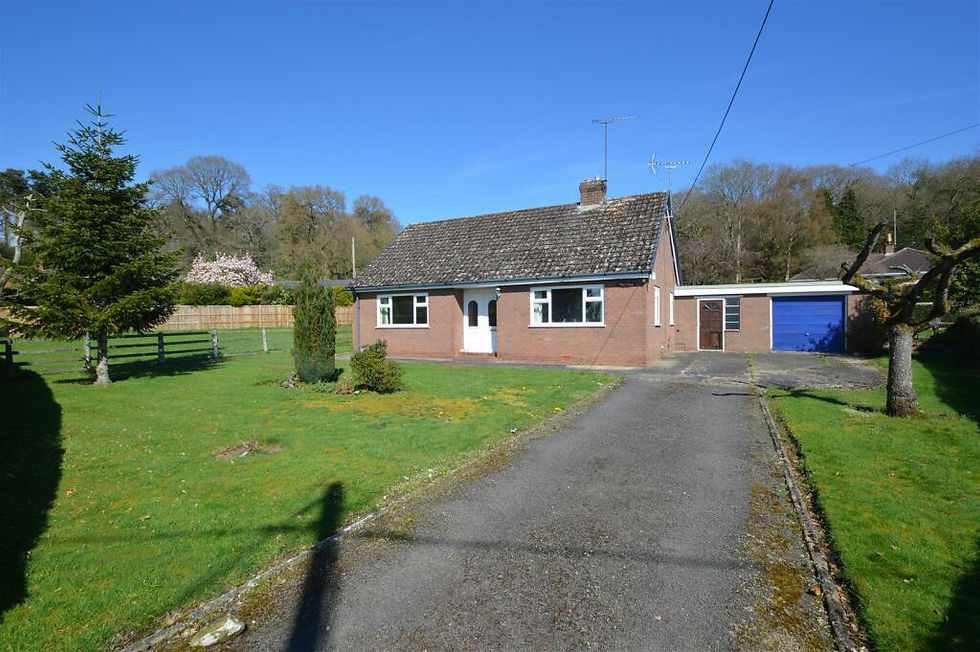Replacement windows approved at Listed Building in Wolverhampton.
- Admin
- May 8
- 4 min read
En-Plan were initlally approached by the owners of a large HMO on Tettenhall Road in Wolverhampton to conduct a planning appraisal on the visbaility of applying to replace the glazing in the main bay windows at the front of the proerty for nerw double glazed units.
As Planning Consultants in Wolverhampton and having a great working relationship with Wolverhamptn City Council we firmly believed that we could achieve the listed building consent to replace the single glazed units with double glazed ones.
En-Plan the prepared and submitted a Listed Building Application for Replacement Timber bay windows on front elevation at 34 - 36 Tettenhall Road Wolverhampton West Midlands WV1 4SL. The building is a Grade II Listed Building with Historic England giving it the following listing:
(Formerly listed as including no. 34 UPPER VAUXHALL)
2 houses, now one. Late C18. Brick with stone dressings; slate roof, hipped to right, with brick stacks. 3 storeys; 3-window range. Top cornice. Ground floor has canted bay windows with stone lintels and cornices over late C19 horned sashes with small panes to upper sashes; 1st floor has windows with rubbed brick flat arches over 2 late C19 sashes and 12-pane sash; 2nd floor has 2 late C19 sashes and 9-pane sash. Central round-headed entrance has Doric aedicule with open pediment, panelled reveals and glazed door. Gable-end stack and cross-axial stack. Right return to Upper Vauxhall has round-headed entrance with flat pilasters and pediment, now blocked.
Listing NGR: SO9029298884


The Plannig Department at Wolverhampton approved of the submitted window sections that showed the proposal would respect the character and setting of this important heritage asset The submitted Heritage Statement and digital mapping rienforced this argument and listed buidling consent was granted for the submitted application.
It shoudl be noted that including or retaining sash windows in a listed building is important for several reasons. Firstly sash windows are often original features in period buildings, especially Georgian, Victorian, and Edwardian architecture. They contribute significantly to the building’s historic character and appearance.
Listed buildings are legally protected. Under UK law (and in many other countries), any alterations must preserve the building’s character. Replacing sash windows with modern alternatives can harm the architectural integrity and may require special permission (Listed Building Consent).
Sash windows were designed to fit the proportions and style of historic buildings. Replacing them with inappropriate modern styles can disrupt the visual symmetry and reduce the aesthetic value of the building. Our in house architectural services can help ensure thsi doenst happen and work with nay glazing provider to ensure the optimum design is used.
Retaining original features like sash windows maintains the cultural and heritage significance of the building. It helps tell the story of its construction and use over time.
Local planning authorities often insist on traditional materials and techniques for any repairs or replacements and will require a Heritage Statement as part of any application to replace them. Please contact us for further information on how we can help you with this.

After the suces of the above the owners apporachd us to gain a Certificate of Lawfulnes for a Larger House in Multiple Occupation Tettenhall Lodge, 34 Tettenhall Road Wolverhampton West Midlands WV1 4SL. The application with the help of suporting statements was granted as on the balance of probabilities the property had operated as a larger HMO for over ten years, therefore putting it beyond the reach of enforcement action and establishing the use.

A larger HMO (House in Multiple Occupation suis generis use refers to a type of residential property that falls outside standard planning use classes due to the number of occupants and the nature of the occupancy. The definition of a Larger HMO (Sui Generis) A larger HMO is defined in UK planning terms as a property:
Occupied by more than 6 unrelated individuals who share basic amenities (e.g. kitchen, bathroom).
It does not fall under Use Class C4, which is for small HMOs (3–6 people).
Instead, it is classed as sui generis, a Latin term meaning "of its own kind."
Sui generis use means the property doesn’t fit neatly into a specific use class, so it requires specific planning permission.
It’s treated on a case-by-case basis by local planning authorities.
Planning Permission: Required to convert a property into a larger HMO.
Licensing: A mandatory HMO license from the local council is also usually required.
Regulation: Subject to stricter space standards, fire safety, and amenity provisions.
An examples of this use could be either of the following:
A 7-bedroom house rented to 7 unrelated individuals.
A converted property with 8 self-contained rooms but shared kitchen or bathroom.
Would you like help understanding how to apply for planning permission for a larger HMO?
Further Information
If you would like to see how our Planning Consultancy services can help you with either of the above areas please do not hesitate to contact us and we would be glad to assist.




Comments